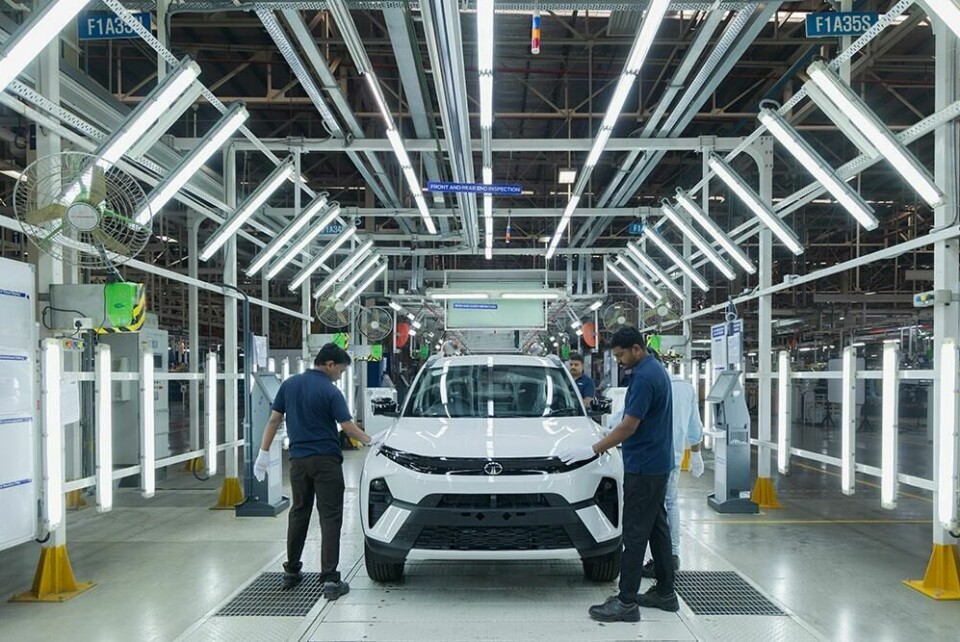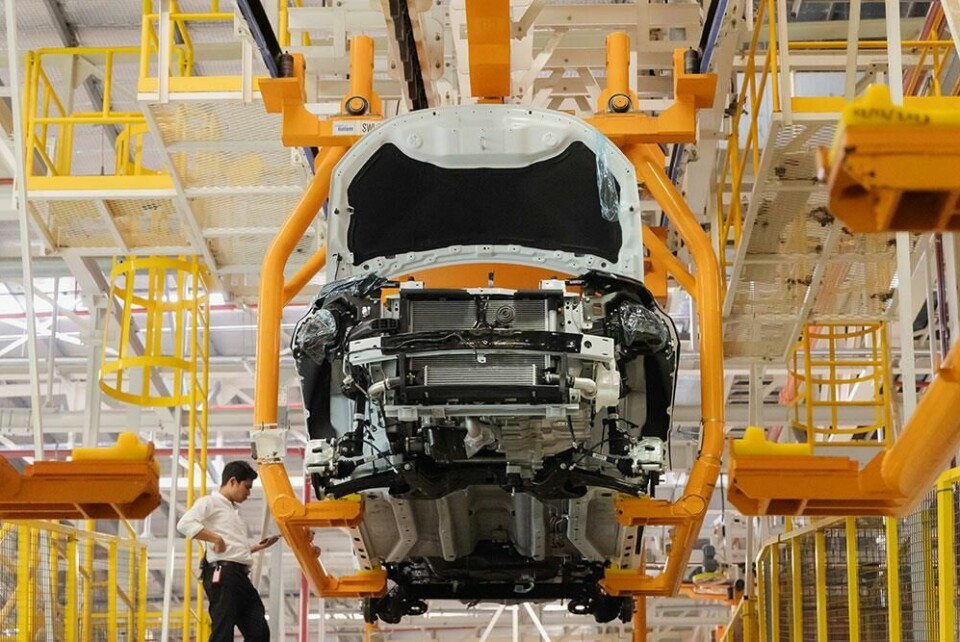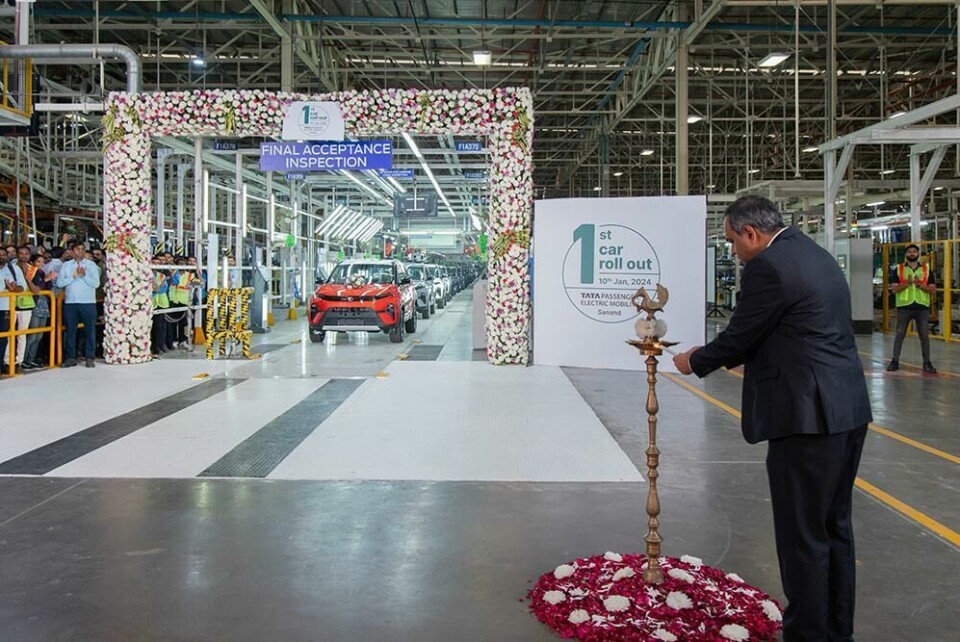Tata subsidiary TPEM launches first Tata-branded vehicle and kicks off production at new Gujarat facility
Tata Passenger Electric Mobility (TPEM) has launched its parent company - Tata’s, first ever own-brand vehicle to mark the inauguration and opening of TPEM’s new vehicle production facility in Sanand, Gujarat, with clear indication of growth in the region.
Tata Passenger Electric Mobility (TPEM), a subsidiary of India’s Tata Motors, has officially kicked off the production of passenger vehicles at its new facility in Sanand, Gujarat. The event was commemorated with the rollout of the first Tata-branded vehicle (the Nexon), from the facility on the west Indian coast. Attended by TPEM Managing Director, Shailesh Chandra and key leaders from the Passenger and Electric Vehicles divisions.

Shailesh Chandra, Managing Director, Tata Motors Passenger Vehicles Limited & Tata Passenger Electric Mobility commented: “Witnessing the first car roll out of the new TPEM facility in Sanand is a proud moment for us. We have successfully retooled the factory in the shortest span of 12 months, taking it to a new level to accommodate a wide range of existing products and future new models to come. I extend my heartfelt gratitude to the Government of Gujarat for its wholesome support and our employees without whom this accomplishment would not have been possible. I am confident that this facility will play a pivotal role in steering Tata Motors, especially TPEM, towards achieving newer feats.”
Sanand is Tata’s second plant in the state; signalling Gujarat (and national) growth
According to Tata, the new facility (which was acquired from Ford India on January 10, 2023) spans 460 acres and is situated in the region’s industrial hub, GIDC Sanand, providing it with access to a robust supplier network. The plant marks Tata Motors’ second plant in Gujarat dedicated to manufacturing both Internal Combustion Engine (ICE) and Electric Vehicle (EV) models.
“With existing capacities near saturation, this new facility will unlock an additional state-of-the-art manufacturing capacity of 300,000 units per annum which is scalable to 420,000 units per annum.”
Comprising four main shops – Stamping, Body Construction, Paint, and Final Assembly – the plant integrates high levels of automation and the latest technology to ensure precision manufacturing, setting new industry benchmarks.
Significant retooling and upgrading for Sanand
The facility has undergone significant retooling and technological upgrades across key areas including Press Shop, (incorporating new dies for stamping critical skin panels), Weld Shop, (modifying all lines with additional robots and incorporating new grippers and fixtures), Paint Shop (upgrading handling systems, programming external robots, painting internal robotics, and waxing setups), and Assembly Shop, (with adjustments to handling systems and the end-of-line system).

The upgrades are an obvious indication that the TPEM facility is gearing up to meet market changes. Regional production is ramping up to satisfy supply needs as capacity is at present, almost full.
Chandra added,”Tata Motors Passenger & Electric Vehicles business has delivered market beating growth over the last few years. We have strong plans to sustain this momentum, with our robust pipeline of future ready “New Forever” products and proactive investments in electric vehicles. With existing capacities near saturation, this new facility will unlock an additional state-of-the-art manufacturing capacity of 300,000 units per annum which is scalable to 420,000 units per annum.”
Job creation and sustainable considerations
Presently employing over 1000 staff and technicians, the new Sanand plant is expected to generate an additional 1000 jobs in the next 3 to 4 months, aligned with production ramp-up plans.

As part of Tata Motors’ commitment to workforce development, employees have been upskilled through diploma, bachelor’s and master’s degree programs, where applicable.
In line with sustainability goals, a 50 KW solar rooftop has also been installed at the plant, making it water-neutral and expected to become ‘water positive’ by December 2024.
India’s demand for both light vehicles and EVs shows upward trend
In recent months and years, India has been signalling a strong positivity in terms of light vehicle demand, both in the ICE and EV slices. Several investments have reinforced the region’s rising activities and realising potential.
Not too long ago, AMS reported that a portion of Tata’s future-forward investments will be focused on EVs, “with the company reported to be in discussions with various sovereign wealth funds to raise $1 billion for its EV business,” and, “Tata should have capacity of c900,000 a year by 2030.”

And though it is the leading player in the region, it isn’t the only major OEM carving out deeper trenches in the Indian market. Just as Tata’s new facility was acquired from Ford India; South Korea’s Hyundai has plans to secure GM India’s plant in Talegaon, also in the West of the country. Hyundai’s Talegaon plans have been announced as aimed at boosting both expanding market share and EV capacity.
Back in Gujarat near TPEM’s new facility, Maruti Suzuki (Maruti) - subsidiary of Japanese OEM Suzuki - and leading carmaker in India, also recently announced that it is set to build its own second vehicle production facility in the region. Maruti will be investing $4.2 billion with a view to boost its production capacity by 167%. The carmaker also announced that it plans to roll out its first EV from the plant by the end of 2024, as it prepares to satisfy an increase in regional and (inter-regional) demand “for both ICEs and EVs.”
Further South of the country in the state of Tamil Nadu, Vietnam’s leading EV manufacturer, Vinfast, recently announced its investment of $2 billion to create a premiere EV hub. The Vietnamese OEMs plans include expansion into Europe and beyond.


